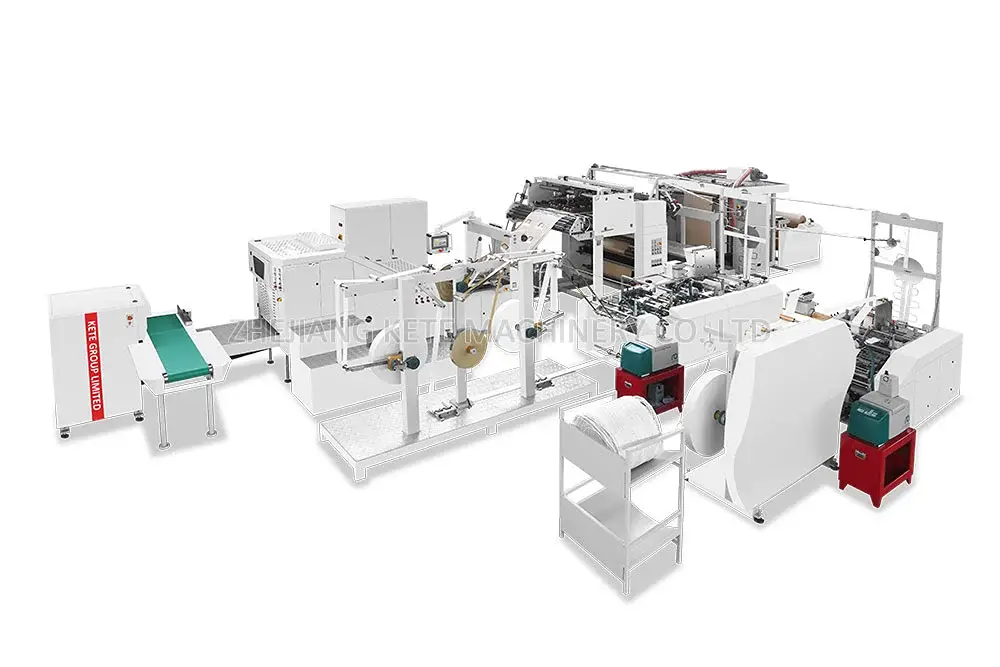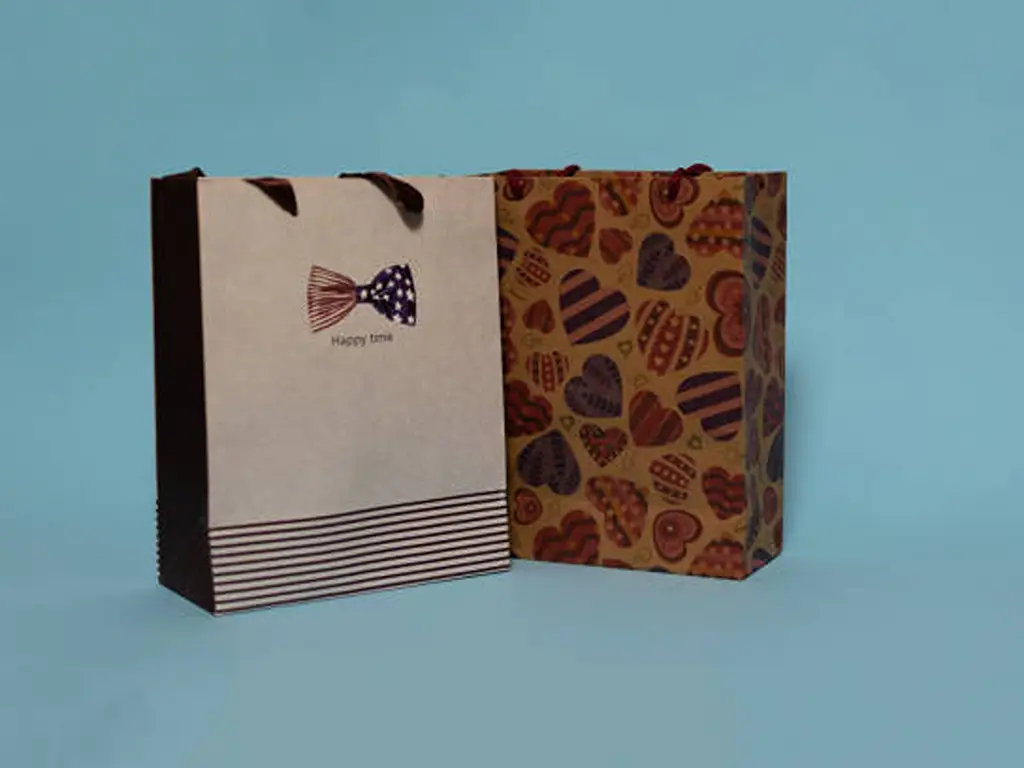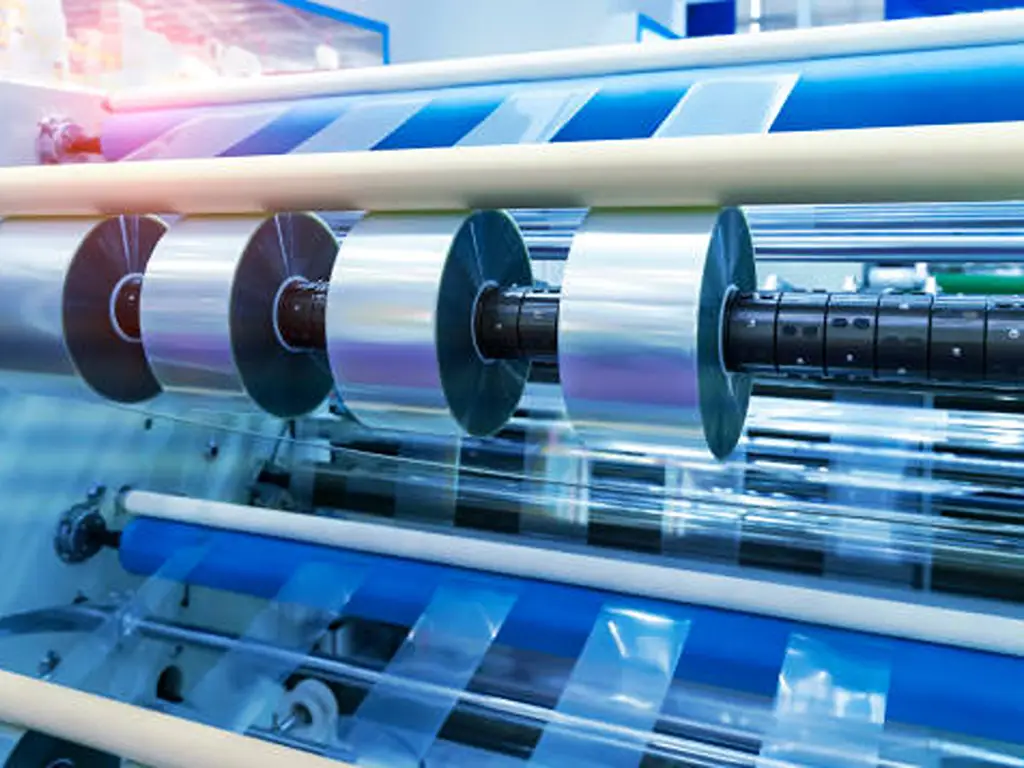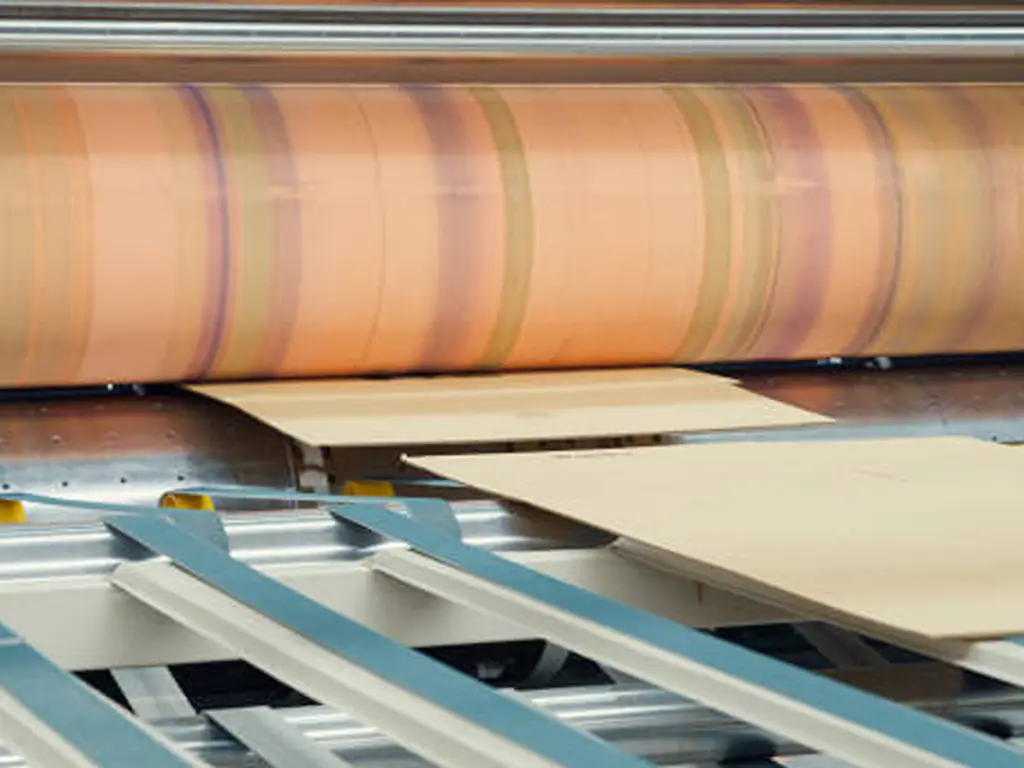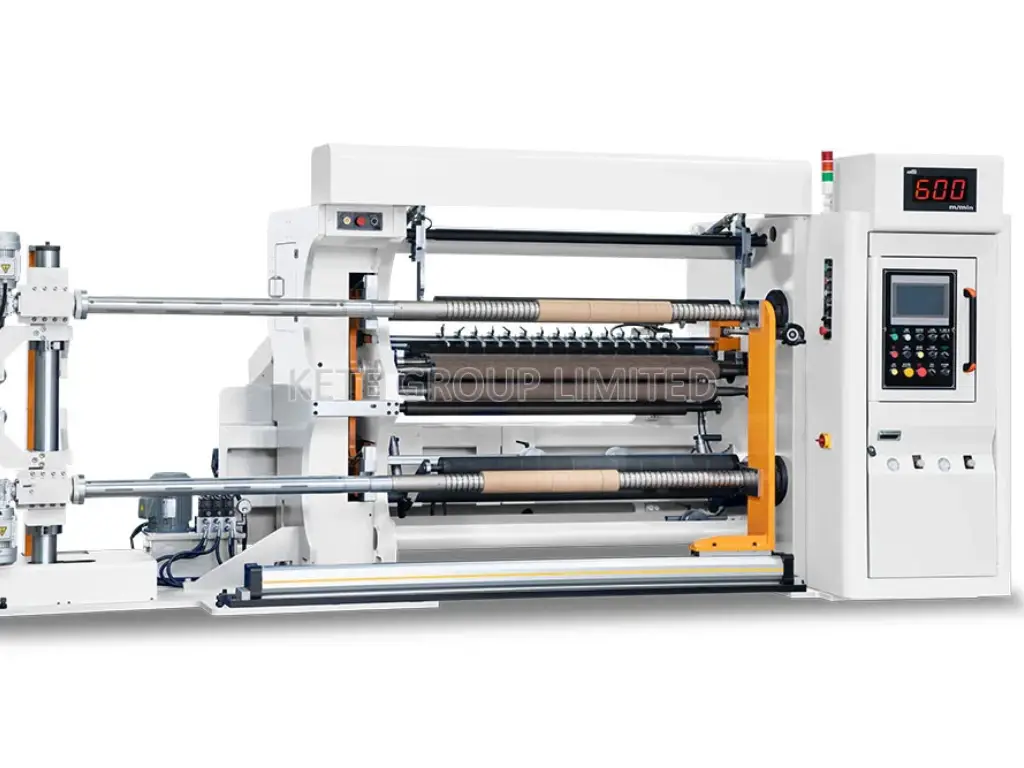
ความรู้เบื้องต้นเกี่ยวกับถุงพลาสติก
The use of plastic bags has become an integral part of our daily lives. From zipping to the grocery store to wrapping up our sandwiches, these different types of plastic bags are the real deal! We’ve got the zippy ones, the big trashy ones, and even the earth-hugging biodegradable plastic bags. Ever wondered how is a plastic bag made? The journey from tiny plastic pellets to a finished bag is a fascinating industrial process, centered around a technology known as Blown Film Extrusion. In this guide, we’ll break down exactly how to make plastic bags.
7 Steps: How to Make Plastic Bags?
คุณเคยสงสัยหรือไม่ว่าถุงพลาสติกธรรมดาๆ เกิดขึ้นได้อย่างไร กระบวนการผลิตถุงพลาสติกประกอบด้วยขั้นตอนที่ซับซ้อนหลายขั้นตอน ซึ่งแต่ละขั้นตอนล้วนมีส่วนช่วยให้ถุงออกมาเป็นรูปร่างที่ต้องการ มาดูกระบวนการผลิตพลาสติกกันอย่างใกล้ชิด
| ขั้นตอน | คำอธิบาย |
| ดิบ Material Transformation | Raw polymers (derived from natural gas or petroleum) are transformed into plastic resin pellets through heating and pressure in machines like pelletizers. |
| Extrusion Process | The resin pellets are fed into an extruder, melted, and forced through a circular die to form a continuous plastic film tube. |
| Blown Film | The film tube is inflated with air, like a balloon, to stretch it to the desired thickness. |
| Cooling and Setting | The plastic film is rapidly cooled using air or water cooling systems to solidify it and ensure uniform thickness. |
| Coloring and Additive Mixing | Dyes and additives (e.g., UV stabilizers, tear resistance agents) are mixed into the molten plastic to give the film color and enhance its properties. |
| การตัดและการปิดผนึก | The plastic film is cut into specific lengths, and the bottom is heat-sealed to form the bag’s base. |
| Printing (Optional) | Flexographic printing is used to apply logos, text, or designs onto the bags. |
| Quality Control and Testing | The bags undergo rigorous tests for thickness, strength, UV resistance, and other properties to ensure they meet quality standards. |
| บรรจุภัณฑ์และการจัดจำหน่าย | The finished plastic bags are counted, stacked, packaged, and prepared for shipping to retailers or consumers. |
จากพอลิเมอร์สู่เม็ดเรซิน: การเปลี่ยนแปลง
Polymers are the raw materials, often coming from natural gas or crude oil, that are the starting point for your plastic bag. Before they become the bags that carry your groceries or your lunch, they must first undergo a significant transformation. These polymers are turned into what we call plastic resin pellets. Think of these plastic pellets as the fundamental building blocks; they are the basic units that will be used to create a durable and functional plastic bag..
Now, how does this metamorphosis happen? The process involves a series of controlled stages. First, the raw polymers are subjected to carefully controlled heat and pressure in specialized machines like pelletizers. The quality of these initial pellets directly impacts the final product, which is why the entire manufacturing line, from the extruder onwards, must be robust. This breaks down their complicated chains into simpler, more manageable forms. This process yields small, cylindrical pellets. These pellets are the go-to material for the next steps because they’re consistent and easy to work with.
These aren’t just any old pellets. They are precisely formulated with additives like colorants or UV stabilizers. So, when you see a plastic bag that’s a particular color or extra tough, it’s all thanks to the special recipe of these resin pellets.
In short, this initial stage of turning polymers into resin pellets is critical for the steps that follow. It sets the mood and prepares the stage for the main event. You can’t just skip it and expect a great show.
The Extrusion Process: Crafting the Plastic Film from Extruder
The film extrusion process is where the crucial transformation begins. The resin pellets are loaded into an extruder, a machine that’s about to give our plastic bag its shape.
This is the heart of the manufacturing line. In the industry, this entire stage is called the Blown Film Extrusion process. The molten plastic is forced through a circular die, which shapes it into a continuous tube of thin plastic film. As the tube exits the die, it is pulled upwards and inflated with air, like a long balloon. This stretching is what creates the thin, strong film.
เมื่อพลาสติกออกจากเครื่องอัดรีด พลาสติกจะเย็นลงอย่างรวดเร็วโดยใช้ลมเย็นหรือน้ำ การเย็นลงอย่างกะทันหันนี้จะทำให้พลาสติกแข็งตัวและกลายเป็นฟิล์ม ความหนาของฟิล์มสามารถปรับได้ตามคุณสมบัติที่ต้องการของถุงขั้นสุดท้าย ต้องการถุงแบบทนทานสำหรับใส่อิฐหรือไม่ คุณต้องการฟิล์มที่หนากว่า กำลังมองหาถุงน้ำหนักเบาสำหรับใส่แซนด์วิชหรือไม่ ฟิล์มที่บางกว่าก็เพียงพอ
แต่มีข้อเท็จจริงที่น่าสนใจอย่างหนึ่งคือ ฟิล์มพลาสติกไม่ได้แบนเมื่อออกมาจากเครื่องอัดรีด แต่จริงๆ แล้วเป็นท่อ หากคุณเคยสังเกตเห็นว่าถุงพลาสติกสำหรับช้อปปิ้งส่วนใหญ่ไม่มีรอยต่อที่ด้านข้าง แสดงว่าเป็นเพราะสาเหตุนี้ ถุงเหล่านี้ถูกตัดมาจากท่อพลาสติกที่ต่อเนื่องกัน ทำให้มีความแข็งแรงและทนทาน
กระบวนการอัดรีดเป็นเครื่องพิสูจน์ความมหัศจรรย์ของการผลิตสมัยใหม่ เป็นการผสมผสานระหว่างวิทยาศาสตร์ วิศวกรรม และศิลปะ เพื่อให้แน่ใจว่าฟิล์มพลาสติกนั้นเหมาะสมกับวัตถุประสงค์ที่ตั้งใจไว้
การลงสีและการเติมสารเติมแต่ง
เมื่อเรามีฟิล์มพลาสติกแล้ว ก็ถึงเวลาที่จะเพิ่มความโดดเด่นให้กับมัน แม้ว่าสีธรรมชาติของโพลีเอทิลีนจะค่อนข้างโปร่งแสง แต่ถุงพลาสติกก็มีหลากหลายสี ตั้งแต่สีทึบแสงไปจนถึงสีใส ทำได้อย่างไร? เข้าสู่โลกของสีและสารเติมแต่ง
สีจะถูกผสมกับพลาสติกที่หลอมละลายก่อนจะอัดขึ้นรูป เพื่อให้แน่ใจว่าฟิล์มจะมีสีสม่ำเสมอกัน ไม่ว่าคุณจะต้องการสีแดงสดใสหรือสีน้ำเงินอ่อนๆ ก็ต้องผสมสีให้เหมาะสม
But color isn’t the only thing added to our bags. Additives play a crucial role in enhancing the final plastic bag properties. Need a bag that can withstand sunlight without degrading? UV stabilizers are added. Want a bag that’s more flexible or resistant to tears? There are additives for that too. This allows the bag’s final properties to be tailored for its intended use.
การทำความเย็นและการตั้งค่าฟิล์ม
เมื่อพลาสติกออกจากเครื่องอัดรีดแล้ว พลาสติกจะอยู่ในสถานะที่เปราะบาง พลาสติกจะอุ่น ยืดหยุ่นได้ และยังไม่อยู่ในรูปสุดท้าย กระบวนการทำความเย็นจึงเข้ามามีบทบาทในขั้นตอนนี้ การทำความเย็นไม่ได้หมายความถึงการลดอุณหภูมิลงเท่านั้น แต่ยังรวมถึงการทำให้พลาสติกเซ็ตตัวอย่างถูกต้อง โดยรักษาความหนาและความแข็งแรงตามต้องการด้วย
Air-cooling systems blow cold air onto the film, solidifying it rapidly. In some cases, water cooling systems are used, where the film is passed over chilled rollers. This rapid cooling is crucial. If the film cools too slowly, it can become uneven or develop imperfections. Think of it like chocolate; if it doesn’t cool uniformly, it can become grainy or discolored. The efficiency of the cooling ring is a major factor in production speed. A well-designed air ring, for example, provides a uniform airflow that cools the bubble evenly, preventing weak spots and allowing the machine to run faster without sacrificing quality.
ในระยะนี้ ลูกกลิ้งก็มีบทบาทสำคัญเช่นกัน โดยลูกกลิ้งจะทำหน้าที่ยืดฟิล์มให้สม่ำเสมอ ป้องกันไม่ให้เกิดรอยย่นหรือรอยพับ นอกจากนี้ ลูกกลิ้งยังต้องรักษาสมดุลระหว่างอุณหภูมิและความตึงอย่างละเอียด จึงมั่นใจได้ว่าฟิล์มจะมีความพอดี
การตัดและการปิดผนึก
With our film set and ready, it’s time to transform it into recognizable bags. But how do we go from a continuous roll of plastic film to individual bags? The answer lies in precision cutting and sealing. Before the bags are cut, the rolls of plastic film are often sent to a printing press. Here, logos, text, and graphics are printed onto the film using a process called flexography, which is fast and efficient for large-scale production.
ฟิล์มจะถูกป้อนเข้าเครื่องที่ตัดฟิล์มเป็นระยะๆ เพื่อกำหนดความยาวของถุง แต่ถุงไม่ได้มีแค่ความยาวเท่านั้น แต่ยังต้องมีฐานด้วย ซึ่งตรงนี้เองที่การปิดผนึกจึงเข้ามามีบทบาท ความร้อนจะปิดผนึกส่วนล่างของส่วนที่ตัดแต่ละส่วน ความร้อนนี้จะหลอมพลาสติกเข้าด้วยกัน ทำให้เกิดการยึดติดที่แข็งแรงซึ่งก่อตัวเป็นฐานของถุง สิ่งสำคัญคือต้องปิดผนึกให้แน่นหนา ซึ่งเป็นสิ่งที่ทำให้ถุงมีความจุในการรับน้ำหนัก
ด้านบนยังคงเปิดอยู่เพื่อให้พร้อมใช้งาน ในบางกรณีอาจมีการเพิ่มคุณสมบัติเพิ่มเติม เช่น ที่จับหรือซิป เพื่อเพิ่มการใช้งานของกระเป๋าให้ดียิ่งขึ้น
การควบคุมคุณภาพ:การทดสอบความหนา ความแข็งแรง และคุณสมบัติที่ต้องการอื่นๆ
การควบคุมคุณภาพถือเป็นฮีโร่ที่ไม่มีใครรู้จักในโลกของการผลิตถุงพลาสติก ท้ายที่สุดแล้วไม่มีใครอยากได้ถุงที่ฉีกขาดจากแรงกดดันเพียงเล็กน้อย แล้วถุงพลาสติกจะผลิตให้มีคุณภาพสม่ำเสมอได้อย่างไร? ผ่านการทดสอบที่เข้มงวด
ถุงแต่ละล็อตจะต้องผ่านการทดสอบหลายขั้นตอน โดยวัดความหนาของถุงเพื่อให้แน่ใจว่ามีความสม่ำเสมอ เพราะถุงที่บางเกินไปอาจไม่ทนทาน ในขณะที่ถุงที่หนาเกินไปอาจทำให้สิ้นเปลือง
การทดสอบความแข็งแรงก็มีความสำคัญเช่นกัน โดยถุงจะถูกบรรจุและยืดออกให้ถึงขีดจำกัดเพื่อให้แน่ใจว่าเป็นไปตามมาตรฐานที่ผู้ผลิตกำหนดไว้ การทดสอบอื่นๆ อาจรวมถึงการสัมผัสกับแสง UV (เพื่อตรวจสอบความทนทานต่อความเสียหายจากแสงแดด) หรือการทดสอบความชื้น (เพื่อตรวจสอบความสามารถในการกันน้ำของถุง)
บรรจุภัณฑ์เพื่อการจัดจำหน่าย
เมื่อถุงผ่านการทดสอบคุณภาพแล้ว ก็พร้อมที่จะส่งออกไปทั่วโลก แต่ก่อนอื่น เราต้องบรรจุถุงก่อน เครื่องจักรจะนับและเรียงถุงเพื่อเตรียมพร้อมสำหรับการจัดจำหน่าย จากนั้นจึงบรรจุลงกล่องเพื่อเตรียมจัดส่งไปยังร้านค้าปลีกหรือส่งตรงถึงผู้บริโภค
ประเภทของพอลิเมอร์ที่ใช้: ถุงพลาสติกทำมาจากอะไร?
คุณเคยสงสัยหรือไม่ว่าถุงพลาสติกที่คุณถืออยู่นั้นทำมาจากอะไร? คุณคงไม่ใช่คนเดียวที่สงสัย โพลีเมอร์ที่ใช้ในถุงเหล่านี้มีมากกว่าแค่คำสั้นๆ เท่านั้น แต่ยังเป็นแกนหลักของการใช้งานถุงพลาสติกอีกมากมาย
โพลีเอทิลีน
Let’s start with the big one: polyethylene. It’s the most common material you’ll find in plastic bags. Originating from natural gas and petroleum, polyethylene goes through a whole manufacturing process to become the bags we use daily. There are different types, like low density polyethylene (LDPE), high-density polyethylene (HDPE), linear low-density polyethylene(LLDPE).
LDPE is what you’ll find in those softer, more flexible, and typically more transparent bags—think produce bags at the grocery store.
HDPE is sturdier, more opaque or translucent, and is what you’re holding when you’ve got a bag full of canned goods.
Linear low-density polyethylene (LLDPE) is tougher and has a higher tensile strength than LDPE. It’s often used in stretch films, toys, and some flexible containers.
โพลิโพรพิลีน
นอกจากนี้ยังมีโพลีโพรพีลีน ซึ่งเป็นวัสดุที่นิยมใช้กันมากในโลกของถุงพลาสติก โพลีโพรพีลีนมีจุดหลอมเหลวที่สูงกว่า จึงนิยมนำมาใช้กับสิ่งของที่ต้องทนความร้อน โพลีโพรพีลีนมักพบในถุงช้อปปิ้งที่นำกลับมาใช้ใหม่ได้ นอกจากนี้ โพลีโพรพีลีนยังมีคุณสมบัติกันน้ำได้ดีอีกด้วย
A Note on Additives and Colorants
It’s important to know that these base polymers are often just the starting point. To achieve specific properties, manufacturers mix in various additives. For instance, color masterbatch (a concentrated pigment) is added to create bags of any color, UV stabilizers are included to prevent the plastic from degrading in sunlight, and anti-static agents can be used to stop bags from clinging together. These additions are what give a plastic bag its final look, feel, and specific function.
So, whether it’s polyethylene or polypropylene, and with a little help from additives, each bag has its own set of perks that make it the right fit for different jobs.
ประโยชน์มหาศาลของถุงพลาสติก
There’s a whole bunch of reasons we can’t live without plastic bags. But let’s just chat about the highlights and key plastic bag properties that make them an important part of our everyday life.
| น้ำหนักเบา | ข้อดีที่สำคัญที่สุดประการหนึ่งของถุงพลาสติกคือมีน้ำหนักเบา คุณสมบัตินี้ไม่เพียงแต่ทำให้พกพาสะดวกเท่านั้น แต่ยังช่วยลดต้นทุนการขนส่งอีกด้วย เมื่อคุณกำลังจัดส่งผลิตภัณฑ์ ทุกออนซ์มีค่า และถุงพลาสติกเป็นโซลูชันที่น้ำหนักเบาแต่แข็งแรง ซึ่งสามารถนำไปสู่การประหยัดต้นทุนได้อย่างมาก |
| ทนทาน | รูปลักษณ์ภายนอกอาจดูไม่สวยงาม ถุงพลาสติกมีความทนทานอย่างเหลือเชื่อ แม้ว่าจะมีโครงสร้างที่บางก็ตาม เนื่องจากใช้โพลีเอทิลีนความหนาแน่นสูง (HDPE) และโพลีเอทิลีนความหนาแน่นต่ำ (LDPE) ในกระบวนการผลิต ถุงเหล่านี้จึงสามารถรับน้ำหนักได้มากโดยไม่ฉีกขาด ความทนทานนี้จึงทำให้ถุงเหล่านี้เป็นตัวเลือกที่เหมาะสำหรับร้านขายของชำและร้านค้าปลีก |
| ทนทานต่อความชื้น | คุณสมบัติที่โดดเด่นอีกประการหนึ่งของถุงพลาสติกคือความสามารถในการต้านทานความชื้น ของชำของคุณจะยังคงแห้งแม้ในขณะที่ฝนตกหนัก นั่นคือความมหัศจรรย์ของพลาสติก วัสดุอย่างโพลีโพรพิลีนมีประสิทธิภาพเป็นพิเศษในการกักเก็บความชื้น ทำให้ถุงพลาสติกเหมาะอย่างยิ่งสำหรับการเก็บอาหารและการใช้งานอื่นๆ ที่ไวต่อความชื้น |
| ความอเนกประสงค์ | ถุงพลาสติกมีหลากหลายรูปร่างและขนาด ทำให้มีความอเนกประสงค์อย่างเหลือเชื่อ ไม่ว่าคุณจะไปซื้อเสื้อผ้า ของชำ หรืออุปกรณ์อิเล็กทรอนิกส์ ก็มีถุงพลาสติกที่ออกแบบมาเพื่อตอบสนองความต้องการของคุณ ความหลากหลายนั้นขยายไปถึงคุณสมบัติ เช่น หูหิ้ว ถุงซิปล็อก และแม้แต่ประเภทของซีล ทำให้มีตัวเลือกมากมายสำหรับทั้งผู้บริโภคและธุรกิจ นอกจากนี้ บรรจุภัณฑ์แบบถุงในกล่องมักใช้สำหรับของเหลว เช่น ไวน์กล่อง และของเหลวขนาดสำหรับสถาบัน บรรจุภัณฑ์ประเภทนี้ให้วิธีการที่สะดวกและมีประสิทธิภาพในการจัดเก็บและขนส่งของเหลว ช่วยลดความจำเป็นในการใช้ถุงพลาสติกแบบใช้ครั้งเดียวทิ้ง |
ประโยชน์เหล่านี้แสดงให้เห็นถึงประโยชน์มหาศาลของถุงพลาสติก ทำให้ไม่ใช่เพียงแค่ความสะดวกสบายเท่านั้น แต่ยังเป็นผลผลิตจากวิศวกรรมและการออกแบบที่ใส่ใจอีกด้วย

Sustainability in Production: What Happens to Waste Material?
เบื้องหลังการผลิตถุงพลาสติก มีขั้นตอนเบื้องหลังมากมายที่ไม่ได้ถูกนำไปใช้ในขั้นตอนสุดท้าย เรากำลังพูดถึงถุงที่ถูกตัด ถุงที่ “ไม่ถูกใจ” และเศษวัสดุที่ไม่ได้ผ่านกระบวนการแปรรูป แต่ในโลกปัจจุบันที่ใส่ใจสิ่งแวดล้อม เราไม่ได้แค่กวาดทิ้งไปใต้พรม
Recycling: The Green Comeback A good slice of this backstage waste is ready for an encore. Off-cuts and those bags that didn’t pass the audition can be gathered, can be gathered, melted down, and reprocessed into new bags. This recycling loop is an efficient way to reuse raw materials in plastic production, cutting down the need for fresh polymers. It’s not just eco-friendly; it’s also kind to the manufacturer’s wallet.
Disposal: The Thoughtful Exit But let’s face it, not every piece of waste is ready for a second act. Some, due to mixed materials or other issues, just can’t be recycled and reused. But even these get a dignified exit. Instead of being sent directly to a landfill, they’re often incinerated in a controlled setting, keeping the environment’s best interests at heart. And the cherry on top? Some top-notch facilities turn the energy from this process into electricity. Now that’s a bright idea!
บทสรุป
From the initial melting of polymer pellets to the final cut and seal, understanding how a plastic bag is made reveals a process of precision engineering. The process of blown film extrusion, followed by automated conversion, transforms simple raw materials into a durable and versatile everyday item. Now that you’ve seen the intricate steps involved, you have a deeper appreciation for the technology and science behind this ubiquitous product.
เริ่มต้นธุรกิจถุงพลาสติกของคุณด้วย KETE
Understanding how plastic bags are made is the first step. Bringing them to life requires precision machinery engineered for efficiency and quality. The blown film extruders, printing presses, and bag-making machines are all critical components of a successful production line.
If you’re considering entering the plastic bag industry or want to upgrade your current operations, having the right technology partner is key. At KETE, we don’t just supply machines; we provide complete solutions tailored to your production goals. Contact our experts for a technical consultation or to get a quote on a production line that fits your needs.
FAQS
Q: How much of plastic bags are actually recycled?
ก: Although plastic bags are technically recyclable, less than 10% of them are actually recycled. Most end up in landfills, incinerators, or the environment due to contamination, mixed materials, or the lack of specialized recycling facilities.
Q: What are plastic bags actually made of?
ก: Plastic bags are typically made from high-density polyethylene (HDPE) or low-density polyethylene (LDPE), both of which are petroleum-based plastics. These materials are lightweight, durable, and moisture-resistant, making them ideal for packaging and retail use.
Q: Why can’t Ziploc bags be recycled?
ก: Ziploc bags are often made of recyclable polyethylene, but they’re frequently contaminated with food residue, oils, or moisture, which makes them difficult to process through standard curbside recycling programs. Additionally, their zipper seals can include mixed materials. However, some grocery stores offer drop-off bins specifically for clean, dry plastic films, including Ziploc bags.
Q: How many years does it take for plastic bags to decompose naturally?
ก: Plastic bags can take 500 to 1,000 years to break down in the environment. Even then, they don’t fully biodegrade — they fragment into microplastics, which persist in ecosystems and pose long-term threats to wildlife and human health.

